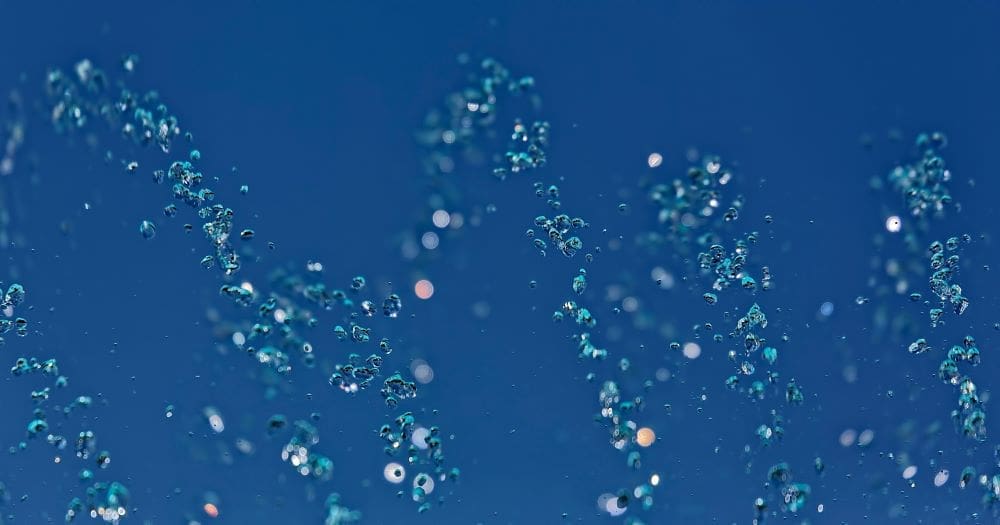A study of bacteria on microplastics in nine European rivers shows salinity to serve as a barrier stopping serious pathogens travelling large distances on plastic debris
As plastic waste continues to accumulate in the world’s waterways, concerns are growing not just over pollution but also the role microplastics may play in transporting harmful bacteria. A new pan-European study has shed light on an important mitigating factor: the salinity barrier between freshwater and marine environments.
Researchers aboard a boat spent seven months sampling nine major European rivers, including the Seine and the Rhine, to better understand how bacteria colonize microplastics as they travel from river to sea. The team gathered water samples along salinity gradients at multiple points on each river, analyzed nutrient and particulate content, and collected microplastics using fine-mesh trawls. They also deployed pristine samples of polyethylene, polyoxymethylene, and nylon mesh into the rivers ahead of the boat’s arrival, retrieving them later for analysis.
Microplastics often act as carriers for diverse microbial communities, forming a so-called “plastisphere.” Some of these microbes can be harmful to humans and animals, raising concerns about potential health risks as plastics travel through aquatic environments. Yet, as the scientists discovered, the transition from river to sea imposes a formidable natural barrier.

After careful DNA extraction and sequencing, the research team found bacterial communities on microplastics to be highly distinct from those freely living in the surrounding waters or attached to organic particles. More notably, they identified sharp differences between the microbial populations inhabiting plastics in freshwater and those found at sea. Estuarine zones, where river and seawater mix, exhibited yet another distinct bacterial profile.
Freshwater microplastics were found to host a higher diversity of bacteria, including potentially harmful genera such as Aeromonas, Acidovorax, Arcobacter, and Prevotella. By contrast, marine microplastics showed significantly reduced bacterial richness, evenness, and diversity, and were predominantly colonized by Vibrio species — salt-tolerant pathogens known to include dangerous strains like Vibrio cholerae and Vibrio parahaemolyticus. Importantly, the study found no evidence of direct pathogen transfer between freshwater and marine environments.
The findings, published in Environmental Science and Pollution Research, highlight what the authors describe as a “strong selective pressure exerted between freshwater and marine environments,” effectively limiting the spread of microorganisms along the river-to-sea continuum.
One notable discovery was the identification of Shewanella putrefaciens on river microplastics — marking the first time this rare human pathogen, which can cause intestinal and soft tissue infections, was recorded traveling on plastic debris. However, the salinity barrier appears to significantly reduce the likelihood of such bacteria reaching marine waters.
Throughout the study, polyethylene emerged as the dominant microplastic type, accounting for 45% of all recovered particles, with polypropylene following at 12%. Interestingly, while earlier research suggested that the type of plastic could influence the development of plastisphere communities, this study did not find a significant link. The researchers suggested that previous findings may have reflected long-term colonization in controlled settings, while their own work captured real-world conditions over shorter timescales.
As policymakers grapple with the complex issue of microplastic pollution, these insights provide valuable context. The European Union has already taken steps to address plastic and microplastic contamination through frameworks like REACH, the Marine Strategy Framework Directive, and the Water Framework Directive, which governs both inland and transitional waters. This study, by clarifying how biofilm communities behave in dynamic environments, offers critical information for future regulatory efforts aimed at safeguarding water quality and public health.
While the research fills important knowledge gaps, the authors point to the need for further studies. Investigations extending beyond bacteria to include viruses, single-celled organisms, and the influence of tides could deepen understanding of how microplastics act as vectors across aquatic systems.
Journal Reference:
Philip, L., Chapron, L., Barbe, V., Burgaud, G., Calvès, I., Paul-Pont, I., Thiébeauld, O., Sperandio, B., Navarro, L., Ter Halle, A., Eyheraguibel, B., Ludwig, W., Palazot, M., Kedzierski, M., Meistertzheim, A.-L. and Ghiglione, J.-F., ‘A Pan-European study of the bacterial plastisphere diversity along river-to-sea continuums’, Environmental Science and Pollution Research 32, 10164–10180 (2025). DOI: 10.1007/s11356-024-35658-9
Article Source:
Press Release/Material by EU DG Environment | Science for Environment Policy (SfEP)
Featured image credit: Ricardo Gomez Angel | Unsplash




